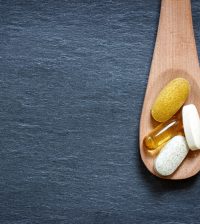- Double Mastectomy May Offer No Survival Benefit to Women With Breast Cancer
- Toxic Lead Found in Cinnamon Product, FDA Says
- Certain Abbott Blood Sugar Monitors May Give Incorrect Readings
- Athletes Can Expect High Ozone, Pollen Counts for Paris Olympics
- Fake Oxycontin Pills Widespread and Potentially Deadly: Report
- Shingles Vaccine Could Lower Dementia Risk
- Your Odds for Accidental Gun Death Rise Greatly in Certain States
- Kids From Poorer Families Less Likely to Survive Cancer
- Tough Workouts Won’t Trigger Cardiac Arrest in Folks With Long QT Syndrome
- At-Home Colon Cancer Test Can Save Lives
Chocolate, Tea, Berries May Cut Diabetes Risk: Study


A diet that includes substances found in chocolate, tea and berries could help protect people against diabetes and other diseases, new research shows.
The study included nearly 2,000 healthy women in the United Kingdom who completed a food questionnaire and were tested for blood sugar (glucose) regulation, inflammation and insulin resistance.
“Our research looked at the benefits of eating certain sub-groups of flavanoids. We focused on flavones, which are found in herbs and vegetables such as parsley, thyme and celery, and anthocyanins, found in berries, red grapes, wine and other red or blue-colored fruits and vegetables,” study leader Aedin Cassidy, of the University of East Anglia in England, said in a university news release.
The investigators found that consuming high levels of flavones and anthocyanins was associated with lower insulin resistance, better blood sugar regulation and lower levels of inflammation. Chronic inflammation is associated with diabetes, obesity, cardiovascular disease and cancer.
The study was published Jan. 19 in the Journal of Nutrition.
“This is one of the first large-scale human studies to look at how these powerful bioactive compounds might reduce the risk of diabetes,” Cassidy said.
Earlier research that took place in laboratories suggested that these types of foods might affect blood sugar, which plays a role in type 2 diabetes risk, she noted. However, it was unknown how regular consumption of these ingredients might affect a person’s blood glucose and inflammation levels and insulin resistance, Cassidy said in the news release.
What remains unclear is exactly what amounts of these compounds are needed to reduce the risk of diabetes, the study authors added. Also unclear is how much of a health benefit the compounds really carry — the study found an association between consumption and seemingly better health but not cause-and-effect.
According to study co-author Tim Spector, of King’s College London, “This is an exciting finding that shows that some components of foods that we consider unhealthy like chocolate or wine may contain some beneficial substances. If we can start to identify and separate these substances we can potentially improve healthy eating,” he said in the news release.
More information
The U.S. Department of Health and Human Services outlines how to prevent type 2 diabetes.
Source: HealthDay
Copyright © 2024 HealthDay. All rights reserved.










